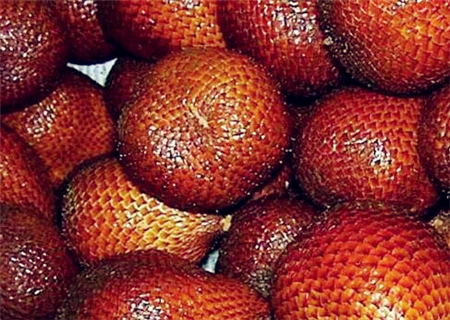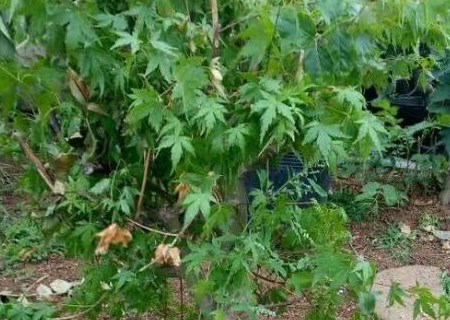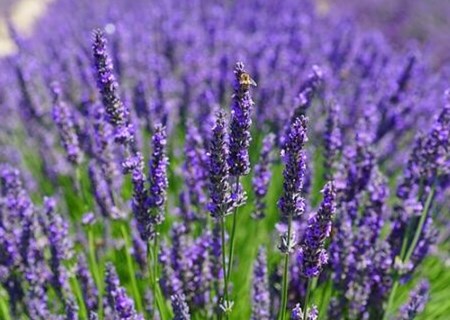How to grow snakeskin fruit? How many years will it turn out? When is the season mature?
Snake skin fruit, also known as Sharat, is a famous fruit in Southeast Asia. China is distributed in the west of Yunnan Province, and snake skin fruit has been introduced and planted sporadically in South China for more than 50 years. So how to grow snakeskin fruit? How many years will it turn out? When is the season ripe?

When will the snake skin fruit ripen?
It takes about 3 years for snake skin fruit to be planted and harvested.
Snake skin fruit likes tropical humid climate, high temperature and high humidity is an important condition for its growth and development. The most suitable conditions for growth are that the average annual temperature is higher than 22 ℃, the coldest monthly average temperature is more than 18 ℃, and the relative humidity is more than 85%.
There are about 14 species in the world, distributed in tropical Asia, such as India, Indo-China Peninsula and Malaysia Islands. Indonesia is the country with the most successful development of snake skin fruit germplasm resources, cultivation techniques and local market. China is distributed in the west of Yunnan Province, and snake skin fruit has been introduced and planted sporadically in South China for more than 50 years.
Cultivation techniques
Reproduction method
Raising seedlings
There are two methods of raising seedlings of snake skin: sprouting tillers and seeds. To raise seedlings with sprouting strips, the sturdy ones were selected from the multiple sprouting strips of the mother plant, put into a plastic container from the top down, filled with soil or rice chaff, and cut off after 2 months when the sprouting strips grew more roots. transplant it into a bamboo container to continue cultivation. When transplanting, cut off half of the leaves of the tillering strips, tie them tightly with nylon ropes or bamboo strips, put them in a bamboo container and pour mud on them, and continue to cultivate them under the sunshade net.
Seed breeding can not only sow the seeds on the sand bed and transplant them into polyethylene containers after sprouting, but also sow the seeds directly on polyethylene containers and raise seedlings by conventional seedling raising methods. Because the seed breeding method can not determine the sex of the seedlings, it is mostly used in monoecious snake skin varieties.
Afforestation
1 woodland selection
Altitude, moisture and light transmittance should be taken into account in the selection of new forest land. Snake skin fruit can be planted on land at an altitude of 300m to 600m, but the most suitable one is at 400m to 600m. Snake skin fruit has a high requirement of moisture and is required to be moist throughout the year. The new afforestation requires shade, so it can be planted under the existing stand, and there is no restriction on the species composition of the stand, both coniferous and broad-leaved trees, but the canopy requires 20% to 30% transmittance. It can withstand full light after planting for 2 to 3 years.
2 row spacing
There are many kinds of row spacing, some 1.5m × 1.5m, 1.5m × 2.0m, 2.0m × 2.Om and 2.5mX3.0m.
3. Land preparation
General use of full reclamation, planting hole specifications are generally 50cmX50cmX50cm.
Planting management
Water and heat management
Indonesia has good hydrothermal conditions, basically does not need irrigation below 600m above sea level, and there is no problem of low temperature and freezing damage.
Nutrient management
Generally, each 1~2kg is fertilized twice a year, which is applied in dry season (March-August) and rainy season respectively. Fertilizers use compound fertilizers with a large number of elements, such as those with a N:P:K ratio of 1:1:1, and fertilizers without trace elements.
Leaf number control
The leaf number of snake skin fruit needs to be properly controlled. The leaf number of "Pondoh" variety is generally controlled at 7-8 per plant, and that of "Bali" is generally controlled at 14-16 leaves. The leaf can be cut off whether it is dead or not, but the leaf under the fruit should be retained to support the fruit. The cut leaves are generally not removed, but are covered on the ground to reduce soil erosion and increase nutrition.
Ratio of male and female plants
For "Pondoh" variety, the ratio of female to male plant is 50:1, that is, there is one male plant for every 50 female plants, each male plant has 4-5 branched inflorescences, and each branch inflorescence is used for pollination of about 10 female plants. There is also a female-to-male ratio of 20:1, that is, one male for every 20 female plants.
Artificial pollination
For "Pondoh", artificial pollination is needed.
Each inflorescence was artificially pollinated twice with an interval of 3 to 4 days. That is, the male inflorescence is collected, tap the male inflorescence on each open female inflorescence to scatter its pollen on the female flower, and then add a shield over the pollinated female inflorescence to prevent Rain Water from scouring. The shield can be made of plastic film or the leaves of snakeskin fruit, but the protective effect of the plastic shield is better.
Time: 2019-03-18 Click:
- Prev

What are the seed planting methods of Acer maple? What is the difference between red maple and green maple? The price of green maple is much.
Green maple, generally refers to the chicken claw maple, Aceraceae, dark gray bark. Distributed in East China, Central China to Southwest China and other provinces. Born on the edge of a low-altitude forest or in a sparse forest. Do you know what are the methods of planting green maple seeds? What is the difference between red maple and green maple? What is the price of green maple? Qingfeng is more resistant to overcast.
- Next

How to grow beautiful lavender? Can the North grow? When and how to plant? Can you make money?
Lavender belongs to Lavender genus of Labiatae family. It is a plant material for arranging flower beds, flower perianth, creating flower sea and other garden landscapes. It also has good medicinal, health care, chemical and other practical values. How to grow lavender? Can the North grow? When and how to plant? Can you make money? Lavender planting method
Related
- Fuxing push coffee new agricultural production and marketing class: lack of small-scale processing plants
- Jujube rice field leisure farm deep ploughing Yilan for five years to create a space for organic food and play
- Nongyu Farm-A trial of organic papaya for brave women with advanced technology
- Four points for attention in the prevention and control of diseases and insect pests of edible fungi
- How to add nutrient solution to Edible Fungi
- Is there any good way to control edible fungus mites?
- Open Inoculation Technology of Edible Fungi
- Is there any clever way to use fertilizer for edible fungus in winter?
- What agents are used to kill the pathogens of edible fungi in the mushroom shed?
- Rapid drying of Edible Fungi

